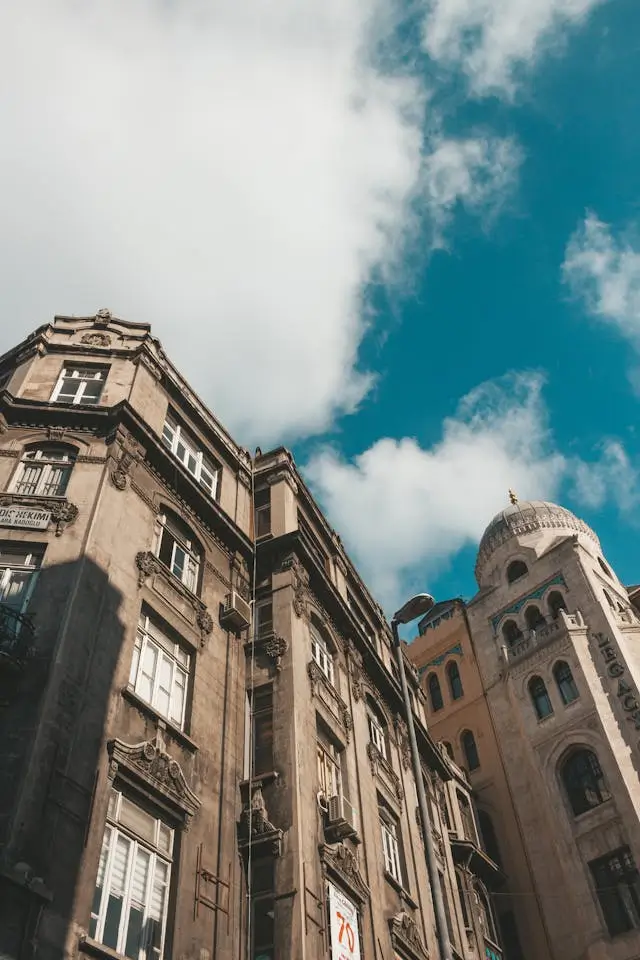Bucharest, Romania’s capital, is a city filled with contradictions, where the past and present merge in unique and fascinating ways. With a history that spans centuries, Bucharest has survived wars, revolutions, and social upheavals, only to rise as a vibrant metropolis today. What makes Bucharest especially captivating is the many layers it contains — from its storied past and beautiful architecture to the quirks that define its identity.
In this article, we’ll explore 26 fun facts about Bucharest, shedding light on aspects of the city that you may not have known before. These facts highlight the lesser-known yet intriguing sides of Bucharest, revealing why it’s such a special destination for travelers.
1. Bucharest Was The First Capital To Be Illuminated By Kerosene
In 1857, Bucharest made history as the first capital city in the world to be illuminated with kerosene lamps. Romanian investor Teodor Mehedinteanu set up the first kerosene refinery in Ploiești, which led to Bucharest becoming the first city to use modern lighting. This innovation marked the beginning of a new era in the city’s development.
2. Michael Jackson’s Monument in Bucharest
After the fall of the Communist regime in 1989, Western celebrities began visiting Bucharest, and Michael Jackson was one of the first to perform there. His concert was an iconic moment for the city, and after his death in 2009, a monument was erected in his honor at King Michael I Park. The nearby street was also renamed “Michael Jackson Alley,” paying tribute to the King of Pop’s influence on the city’s cultural scene.
3. The Palace of the Parliament is the Heaviest Building in the World
The Palace of the Parliament in Bucharest is not only one of the largest administrative buildings in the world, but it’s also the heaviest. Weighing over 4 million tonnes, it holds the record for the heaviest building on Earth. Built under the regime of Nicolae Ceaușescu, the palace is a symbol of both Romania’s tumultuous past and the immense power of its leaders.
4. The Great Fire of 1847
In March 1847, a massive fire ravaged Bucharest, destroying over 1,800 buildings and nearly a third of the city. The fire began in a wooden house near the Old Court and spread rapidly due to strong winds. Despite the devastation, Bucharest quickly rebuilt, with the help of King Carol I, and emerged stronger than before. The fire remains one of the most significant events in the city’s history.
5. Bucharest Is Known As ‘Little Paris’
Bucharest’s architectural transformation after the Great Fire was heavily influenced by Parisian design. The city became a hub for French-inspired neoclassical architecture, which led to its nickname, “Little Paris.” The elegant boulevards and grand buildings of the Belle Époque period earned Bucharest a place among Europe’s most sophisticated cities during that time.
6. Bucharest Is Also Referred to As The ‘New Berlin’
After the fall of the Berlin Wall, Bucharest experienced a significant transformation, with a mix of modern developments and gritty, urban elements. Like Berlin, Bucharest became known for its vibrant street art, dynamic nightlife, and distinct blend of old and new architecture. For this reason, it’s often referred to as the “New Berlin” or “Little Berlin.”
7. Bucharest Has Its Own Arc de Triomphe
Inspired by Paris, Bucharest built its own Arc de Triomphe to commemorate Romania’s victory in the War of Independence in 1878. The original wooden arch was later replaced by a larger stone version after World War I. Standing proudly at the northern end of Victory Avenue, this impressive monument symbolizes Romania’s strength and independence.
8. The City Was Once the Capital of Wallachia
Bucharest became the capital of Wallachia in 1659 under the rule of Gheorghe Ghica. Wallachia was one of the historical provinces that would eventually form modern-day Romania. Bucharest’s status as a regional capital was solidified when Wallachia and Moldavia united in 1859, and the city became the capital of Romania.
9. Calea Victoriei Was The First Paved Road in Bucharest
Calea Victoriei, one of Bucharest’s most famous streets, holds historical significance as the first road to be paved in the city. In 1692, under the rule of Constantin Brâncoveanu, wooden planks were used to create a paved road that would eventually become the main trade route connecting Bucharest to Transylvania. This marked a key moment in the city’s urban development.
10. The Longest Boulevard in Europe – Unirii Boulevard
Bucharest is home to Union Boulevard (Bulevardul Unirii), which stretches for 3 kilometers from the Palace of the Parliament to Alba Iulia Square. Inspired by Paris’s Champs-Élysées, Union Boulevard is the longest boulevard in Europe and offers breathtaking views of the city’s monumental buildings. It is an impressive example of Bucharest’s grand urban planning.
11. The Politehnica Metro Station Contains 80-Million-Year-Old Fossils
One of Bucharest’s metro stations holds a remarkable secret. The Politehnica Metro Station is known for its distinctive pinkish-brown marble floor, which actually contains fossils dating back 80 million years. The limestone used in the floor’s construction has rare patterns that reveal the ancient fossils, making it not just a station, but a piece of natural history.
12. Melik House Is The Oldest Building in Bucharest
Dating back to around 1750, the Melik House is the oldest private building still standing in Bucharest. It was constructed in the style of traditional Wallachian peasant houses and now houses the Theodor Pallady Museum, dedicated to the famous Romanian painter Theodor Pallady. The Melik House stands as a testament to Bucharest’s rich architectural heritage.
13. Bucharest Was Named After A Shepherd
The name Bucharest is believed to have been inspired by a shepherd named Bucur. According to legend, Bucur founded a settlement near the Dâmbovița River and named it after his beloved, Dâmbovița. The name “București” is derived from this legend, with the suffix “-ești” commonly used in Romanian to denote settlements.
14. Mici (Skinless Sausages) Were Invented in Bucharest
Bucharest is the birthplace of mici, a beloved Romanian dish consisting of skinless sausages made from minced meat and spices. The dish was created in the 14th century by a creative cook who ran out of sausages’ skins but didn’t want to disappoint guests. The unique sausages, cooked on skewers, became a popular and traditional Romanian snack, still enjoyed today.
15. The Sky Tower is the Tallest Building in Bucharest
Standing at 137 meters, the Sky Tower is the tallest building in Bucharest. Completed in 2012, this modern office building offers stunning panoramic views of the city from its 36th-floor restaurant. Its sleek design contrasts with some of Bucharest’s older architecture, but it’s a symbol of the city’s modernization and development.
16. Bellu Cemetery Is The Oldest Cemetery in Bucharest
Bellu Cemetery, established in 1855, is the final resting place of many of Romania’s notable figures, including politicians, writers, and artists. The cemetery is not only a place of remembrance but also an open-air museum showcasing unique architectural tombs. It remains Bucharest’s most significant cemetery, rich in history and culture.
17. Cișmigiu Garden Is The Oldest Park in Bucharest
Cișmigiu Garden, created in 1847, is Bucharest’s oldest park and one of its most charming green spaces. Located in the heart of the city, the park features a peaceful lake, walking paths, and lush greenery, making it a popular spot for locals and visitors alike. Its historical significance and tranquil atmosphere make it a must-see for anyone visiting Bucharest.
18. A Large Part of Bucharest Was Demolished During the Communist Era
Under the leadership of Nicolae Ceaușescu, a large part of Bucharest was demolished to make way for his vision of socialist systemization. Historic buildings were razed to create wide boulevards and massive, utilitarian structures. Even several churches were moved to new locations on rails to preserve them. This period of destruction left a significant mark on the city’s landscape and history.
19. Saint Demetrius Is the Patron Saint of Bucharest
Saint Demetrius the New of Basarabov is Bucharest’s patron saint. His relics are housed in the Patriarchal Cathedral, and his feast day is celebrated annually in the city. Saint Demetrius is depicted on Bucharest’s coat of arms and is a symbol of the city’s spiritual and cultural heritage.
20. Colțea Hospital Was the First Hospital in Bucharest
Founded in 1704, Colțea Hospital holds the distinction of being Bucharest’s first hospital. It was originally built to care for the city’s poor and sick, and it still operates today as one of Romania’s top medical institutions. The hospital’s Neoclassical building, constructed in 1888 after an earthquake destroyed the original, is one of the most beautiful in the city.
21. Bucharest’s Population Is Shrinking
After a period of rapid population growth, Bucharest’s population has been steadily declining in recent years. At its peak, the city’s population exceeded 2 million, but it now stands at just under 1.8 million. This decline is partly due to emigration after the 1989 revolution and Romania’s EU accession in 2007. However, Bucharest continues to grow in terms of infrastructure and development, particularly among younger generations.
22. Bucharest is Home to One of the Oldest Public Libraries in Europe
The National Library of Romania, established in 1955, holds an impressive collection of over 14 million books. Located in the heart of the city, this library not only serves as a center of knowledge and culture but is also a stunning example of Bucharest’s architectural evolution. The building itself is a testament to the city’s long history of intellectual pursuit and is a must-visit for book lovers.
23. Bucharest Was the First City in Romania to Have Electricity
In 1882, Bucharest became the first Romanian city to be electrified. The installation of electric streetlights in the city marked a significant milestone in Romania’s technological progress. This early adoption of electricity helped shape Bucharest into the modern city it is today, paving the way for further innovations.
24. Bucharest is Famous for Its Parks and Green Spaces
The city is home to a variety of parks and green spaces, offering a respite from the hustle and bustle of city life. One of the most popular parks, Herăstrău Park (now called King Michael I Park), is the largest in Bucharest and spans 187 hectares. It features scenic paths, a lake for boating, and a Japanese garden. Another notable park is Cișmigiu Gardens, which is the oldest and most visited park in Bucharest. With free entry to most parks, Bucharest offers numerous opportunities to connect with nature.
25. Bucharest Has a Fascinating Underground Art Scene
Bucharest’s underground art scene is alive and thriving, with a variety of galleries, music venues, and alternative spaces that showcase local and international talent. These venues often host experimental art exhibitions, live music performances, and theatre productions. The city’s alternative art scene provides a fresh perspective on Bucharest’s creative culture, attracting a younger, vibrant crowd looking for a unique cultural experience.
26. Bucharest is a City of Contrasts
Bucharest is a city of contrasts, blending old-world charm with modernity. The Old Town, or Lipscani District, is a labyrinth of narrow streets and historic buildings that hark back to the city’s 19th-century heyday. In contrast, the city is home to modern skyscrapers and cutting-edge architecture, reflecting the rapid growth and development that Bucharest has experienced in recent years. This juxtaposition of past and present gives the city its unique character, where every corner tells a story of transformation.
27. Bucharest’s “Mănăstirea Stavropoleos” Monastery Is a Hidden Gem
Tucked away in the Old Town, the Stavropoleos Monastery is a peaceful retreat from the city’s hustle and bustle. Built in 1724, it is a beautiful example of Brâncovenesc style, an architectural blend of Byzantine and Romanian traditions. The monastery is famous for its intricate wood carvings and ornate decorations. It’s a small but significant historical site, offering visitors a quiet place for reflection and a glimpse into Romania’s spiritual heritage.
28. Bucharest is a UNESCO City of Music
In 2021, Bucharest was designated a UNESCO City of Music, joining other cities around the world recognized for their rich musical heritage. The city’s music scene spans from classical and opera to contemporary genres. The Romanian Athenaeum, an architectural masterpiece, hosts some of the finest orchestras, while local venues regularly feature performances ranging from jazz to electronic music. This recognition highlights the city’s ongoing contribution to the global music landscape.
29. Bucharest Has More Than 2000 Restaurants
Bucharest offers a culinary journey like no other, with more than 2,000 restaurants across the city. From fine dining experiences to street food delights, Bucharest is a city for food lovers. The range of international cuisines, including Italian, French, and Middle Eastern, is matched by traditional Romanian dishes. Whether you are in the mood for hearty stews or light pastries, Bucharest’s diverse food scene has something to offer everyone.
30. The City Boasts One of the World’s Largest Open-Air Museums
The Village Museum (Muzeul Satului) is an open-air museum located in Herăstrău Park, dedicated to preserving Romania’s rural heritage. Spanning 14 hectares, it features over 300 traditional peasant houses, churches, and farmsteads from all over the country. Visitors can explore authentic wooden structures, observe traditional craft demonstrations, and even experience rural life in Romania through various workshops and events. The museum is a must-visit for anyone interested in Romanian history and culture.
31. Bucharest is Known for Its Beautiful and Unique Architecture
Bucharest is home to a striking array of architectural styles, from Art Nouveau to Brutalism, and everything in between. The city’s Old Town, or Lipscani district, is filled with historic buildings that have withstood the test of time. Additionally, the city is dotted with impressive modern structures like the Sky Tower and the National Library, showcasing Romania’s ability to blend its rich architectural past with contemporary innovation.
32. Bucharest is One of the Greenest Capitals in Europe
Despite being a bustling urban center, Bucharest is one of Europe’s greenest capitals, with more than 12% of the city dedicated to green spaces. The city is home to numerous parks, gardens, and lakes that provide residents and visitors with a break from city life. Some of the city’s most beloved parks include Herăstrău Park, Cișmigiu Gardens, and Tineretului Park, which are perfect for outdoor activities and leisurely strolls.
33. Bucharest is Home to One of the World’s Most Expensive Books
Bucharest is home to one of the most expensive books ever sold: a 17th-century manuscript of Romanian philosopher Dimitrie Cantemir’s work. This rare manuscript was sold for over 7 million euros, making it one of the most valuable literary pieces in the world. It highlights the city’s deep intellectual history and its role in preserving rare and ancient works.
34. Bucharest Was Once The Eastern Bloc’s Fashion Capital
In the mid-20th century, during the Communist era, Bucharest was considered the fashion capital of the Eastern Bloc. Despite the political and economic challenges, the city’s elite enjoyed a lifestyle that was influenced by European fashion trends, and high-end boutiques flourished in the city center. Today, while the city has evolved, elements of its fashionable past still remain in its contemporary style, with numerous fashion events and designer stores.
35. Bucharest’s Central University Library Was Once the City’s Largest Building
Built between 1893 and 1900, the Central University Library of Bucharest was once the city’s largest building. With its grand architecture and impressive collection of books and manuscripts, the library is a significant symbol of the country’s dedication to education. While it’s not the largest building in the city anymore, it still serves as a key cultural and intellectual hub in Bucharest.
36. The Bucharest Metro Is One of the Fastest Growing Metro Systems in Europe
Opened in 1979, the Bucharest Metro has rapidly expanded to become one of the fastest-growing metro systems in Europe. With four lines and over 70 stations, it is a convenient and affordable way to get around the city. The metro connects key areas of the city, including the Old Town, the airport, and major residential districts, making it an essential part of everyday life in Bucharest.
37. The Largest Orthodox Cathedral in Romania is in Bucharest
The Patriarchal Cathedral in Bucharest is the largest Orthodox church in Romania. It serves as the main place of worship for the Romanian Orthodox Church and is located on the hilltop of Bucharest’s Old Town. This majestic cathedral is a symbol of Romania’s rich spiritual and cultural heritage and is an architectural masterpiece with beautiful frescoes, intricate woodwork, and grand altars.
38. The Bucharest Opera House Is Among the Oldest in Europe
Founded in 1852, the Bucharest National Opera is one of Europe’s oldest opera houses and a key institution in Romania’s cultural life. It hosts world-class performances, including opera, ballet, and classical concerts. The opera house is renowned for its stunning architecture and exceptional acoustics, making it one of the most prestigious venues in Romania.
39. Bucharest Is Famous for Its Vibrant Street Art Scene
Over the last decade, Bucharest’s street art scene has exploded, with murals and graffiti adorning buildings all over the city. The district of Rahova is particularly famous for its vibrant street art, with colorful murals and graffiti created by both local and international artists. These works of art reflect the city’s creativity and serve as a reminder of its youthful and rebellious spirit.
40. The First Bucharest Beer Was Brewed in 1876
The history of Bucharest’s beer-making tradition dates back to 1876 when the first brewery was founded in the city. The Romanian beer culture has continued to thrive ever since, with Bucharest now home to several breweries, bars, and pubs offering locally brewed beers. It’s a fantastic city for beer lovers, with plenty of local brews to enjoy while exploring the city.
41. Bucharest Was the Birthplace of the First Romanian Film
Bucharest holds a special place in the history of Romanian cinema as the birthplace of the first Romanian film, “Independența României” (The Independence of Romania), made in 1912. The film was a historical drama about Romania’s fight for independence from the Ottoman Empire, and its production marked the beginning of Romania’s involvement in the global film industry.
42. Bucharest is the Home of the Oldest Romanian Newspaper
The first Romanian newspaper, “Gazeta de București,” was established in 1829. This newspaper, which is still in publication today, provides valuable insight into Bucharest’s long journalistic and editorial traditions. It also remains a key part of the city’s modern media landscape, reflecting Romania’s evolving political and social history.
43. Bucharest is a City of Bridges
With the Dâmbovița River flowing through its heart, Bucharest boasts several beautiful bridges, each with its own history and significance. Some bridges, like the “Mihai Viteazul” and “Ferdinand I,” offer both historical value and incredible photo opportunities, while newer bridges, such as the “Basarab Overpass,” highlight the city’s modern development.
44. Bucharest Hosts the Largest Book Fair in South East Europe
The Gaudeamus Book Fair, held annually in Bucharest, is the largest event of its kind in South East Europe. The fair attracts thousands of visitors every year, including renowned authors, publishers, and book lovers from around the world. It’s an important cultural event for the city, celebrating Romania’s literary tradition and its contribution to global literature.
45. Bucharest Has an Intriguing Communist Past
Much of Bucharest’s architecture reflects its communist past, particularly the grand, imposing structures built under the regime of Nicolae Ceaușescu. These include the Palace of the Parliament, which was built as a showpiece of the regime’s power and ambition. While this period of history remains controversial, it has become an essential part of the city’s identity, with several museums and tours dedicated to this era.
46. The Dâmbovița River is the Lifeblood of the City
The Dâmbovița River runs through Bucharest, providing both water and scenic views for many parts of the city. It’s a central part of Bucharest’s geography, with riverside parks, walking paths, and attractions along its banks. The river also plays a vital role in the city’s development, having historically been the main transportation route for goods entering and leaving the capital.
47. The “Village Museum” Shows Romania’s Rural Life
The Village Museum, or Muzeul Satului, is one of Bucharest’s most fascinating attractions, located in Herăstrău Park. This open-air museum showcases Romania’s rural history and heritage through a collection of more than 300 traditional houses, barns, and churches from various regions of the country. It provides a rare opportunity to step back in time and explore what life was like for rural Romanians in the past.
48. Bucharest Is Home to One of the World’s Most Famous “Underground” Secret Locations
Bucharest has a well-kept secret, the former “People’s House” and underground bunker, which was designed to protect communist officials in case of an attack. Today, visitors can tour the bunkers beneath the city, which offer a fascinating (if slightly eerie) glimpse into Romania’s communist-era paranoia and preparations for war.
49. Bucharest is Famous for Its Coffee Culture
Romania’s coffee culture is alive and well in Bucharest, where cafés serve as meeting points for locals and tourists alike. Many Bucharest cafés have a long history, offering a blend of old-world charm and contemporary flair. Whether you’re sipping a Romanian coffee in a historic café or enjoying a cappuccino in a trendy new spot, the city’s coffee culture is a must-experience for any visitor.
50. The City is Home to One of the World’s Largest Bookshelves
In the National Library of Romania, you can find one of the world’s largest bookshelves. This remarkable feature showcases the vast collection of Romanian and international literature housed at the library. The bookshelf is a striking visual representation of the city’s dedication to preserving its literary and intellectual heritage.
Conclusion: Fun Facts About Bucharest
Bucharest is a city with a rich, complex history and a dynamic, evolving present. From its stunning architecture to its vibrant cultural scene, the capital of Romania is a place full of surprises, offering something for every type of traveler. With these 50 fun facts, you can get a better sense of what makes Bucharest such a special destination — a city where history, culture, and modernity converge in fascinating ways.






